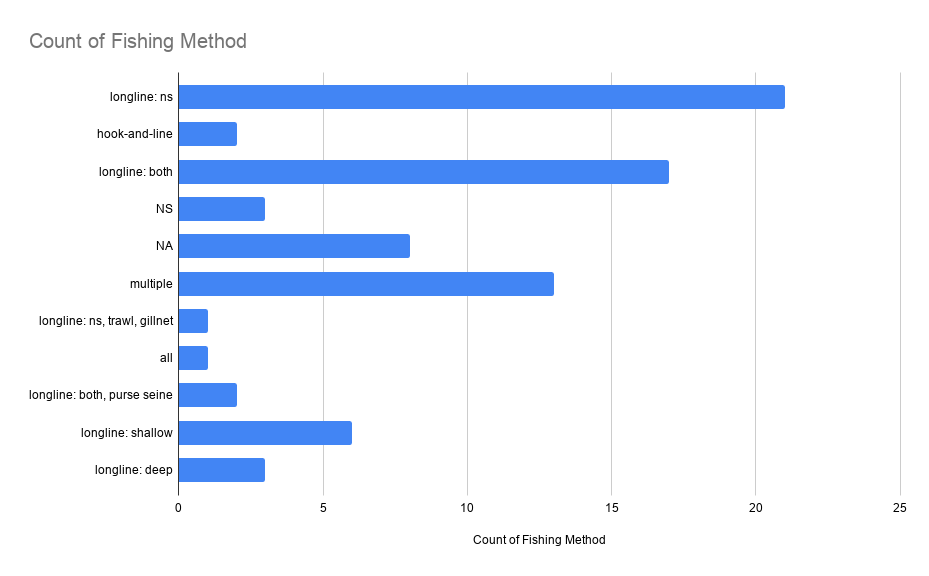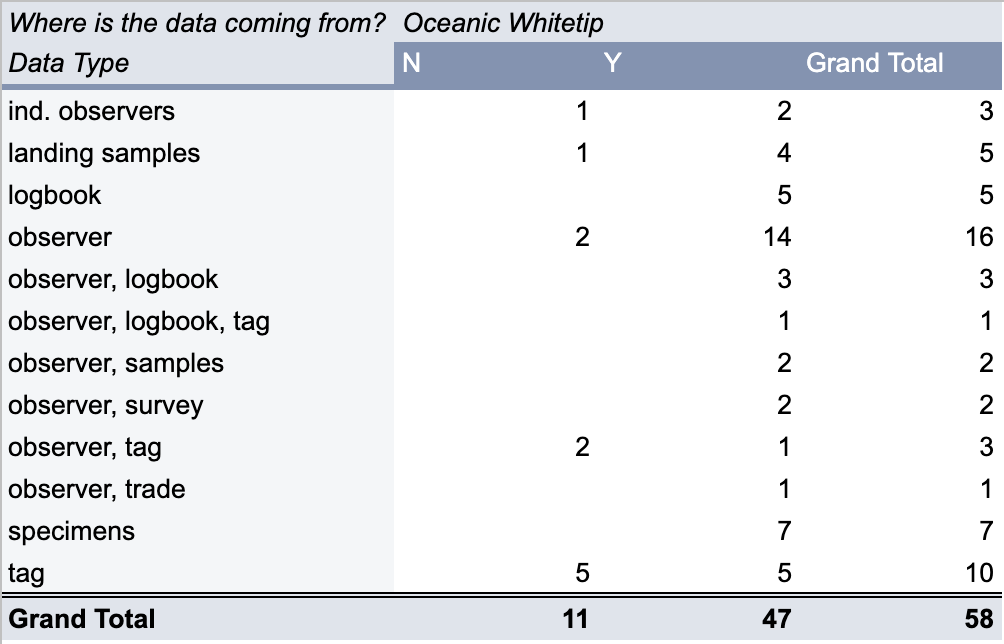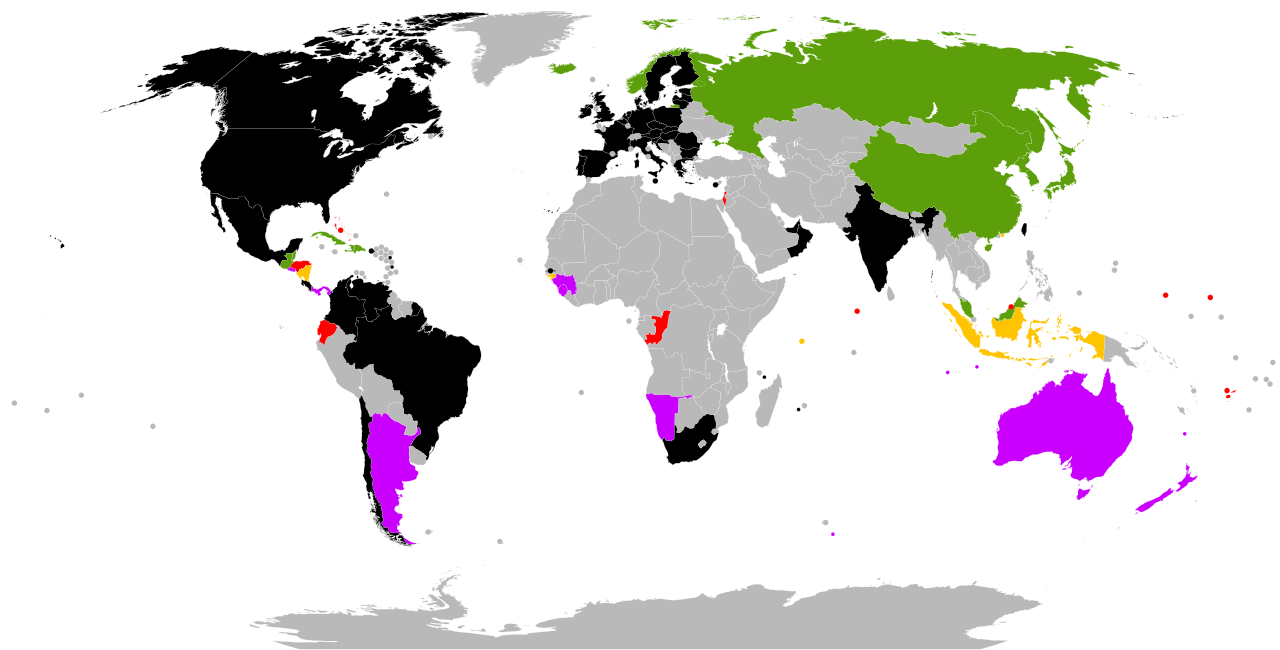The Effects of Being Caught: How Fisheries Affect Oceanic Whitetip Sharks
by Fabiana FerracinaSharks!
- Pelagic sharks, ovefishing and conservation
- Introducing the oceanic whitetip shark
- Go fish!: fisheries and fishing gear
- What we know: summarizing the literature
- Knowledge is action: recommendations from the literature
Pelagic Sharks
Pelagic sharks are open ocean sharks, distributed globally in Earth's oceans. They like warm waters. They migrate. They are the top, apex predators.
Their abundance determines the health of our oceans. If they disappear, the oceans become out of balance, and we suffer too.
There are 53 pelagic shark species and 20 of them are threathed with extinction.
Overfishing
These sharks are vulnerable due to fishing pressures. They are slow to mature, slow to reproduce and do not produce many young.
Modern fishing methods, such as the use of longlines, have devastated shark populations world-wide.
They can be the target catch, but most of the time they are caught incidentally by commercial tuna fisheries.
Conservation
Regional Fisheries Management Organizations (RFMO) is an international body dedicated to the sustainable management of fisheries.
They collect fisheries statistics, assess resources and monitor activities. Given data, they issue mandates.
However not all countries participate. Also, enforcing management measures is challenging.
Other Issues
- Shark fins are valuable. About 100 million sharks are killed each year by finning.
- Loop holes in the laws are exploited.
- No love lost for sharks due to depredation and damage to equipment.
- Different shark species have different risk factors when it comes to bycatch.

Carcharhinus longimanus
Once an abundant species, the oceanic whitetip shark has suffered substatial population decline. Now considered critically endangered by the IUCN.
They live in the top layer of the open ocean and are distributed globally between 30$^{\circ}$ North and 35$^{\circ}$ South.
They can travel great distances, but seem philopatric.
They are caught incidentally by tuna fisheries, purposefully for their fins, or simply killed as they can cause damage to fishing equipment.
Population Trends

Longline Fisheries
- Buoys suspend a ~45 km line at a depth of interest, depending on the target species.
- From the main line, hang several branch lines called gangions.
- At the end of each gangion there is a hook with bait.
- Different hook types and gangion types, lengths; baits include squid, mackerel and sardines.
- Once deployed longlines can soak for hours.
- Most longlines in my review focus on tuna.
Hooks and Gangions
Hooks can have different shapes and be either corrodible or stainless steel.

Gangion lengths and types, monofilament versus wire, can be consired.
Literature Review: Method
Web of Science search yielded 43 articles. 38 were relevant and 39 were further identified from citations.
TS=(((oceanic AND whitetip) OR (Carcharhinus AND longimanus)) AND (fisheries OR overfishing OR longline OR bycatch))
Literature Review: Common Themes
- Finning bans do not solve bycatch mortality.
- Post-release stress and change in behavior.
- Post-release mortality is lower if sharks are not on-boarded and released in good condition.
- Higher catch rates of epipelagic species when hooks are placed above 100 meters depth.
- Circle hooks increase catch rate but lower mortality rate over J hooks.
- Nylon/longer leads good for sharks, bad for other animals.





Conclusions
- Need more data!
- Oceanic whitetip shark population in steep decline and little is know about its post release mortality rates.
- Oceanic whitetip sharks seem more resistant to being stuck on the line.
- Location, location, location: hook placement really matters. Although lower hooks may catch more pelagic thresher sharks.
- No guts for circle hooks: better shark survival at a higher catch rate cost.
Conservation is as much about policy as it is about science.
Shark conservation relies on our ability as a people to understand how to utilize our planet's resources in a sustainable fashion.
Discussion
- Are modification to fishing gear enough?
- What is the highest priority problem to solve?
- How do we enforce protections?
- How do we get governments to care?

